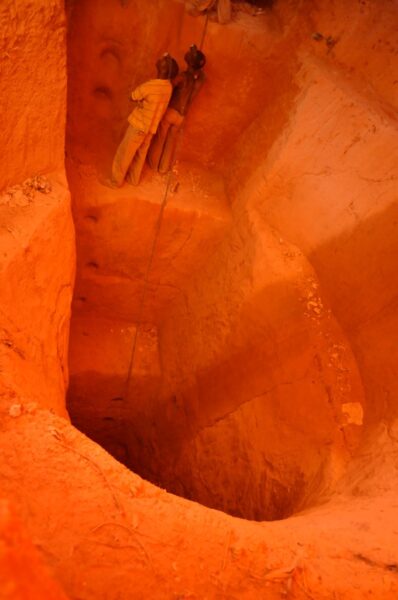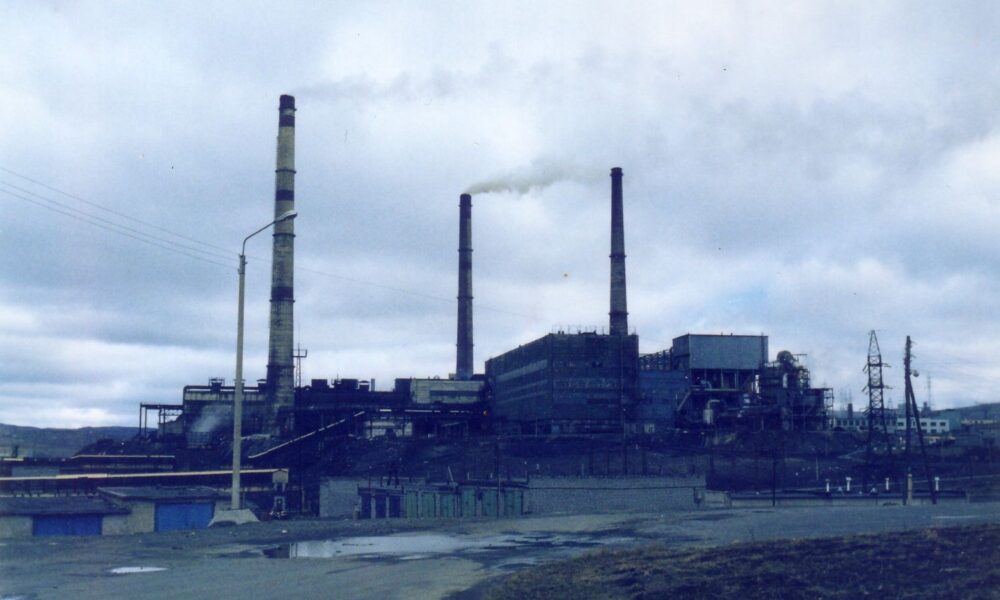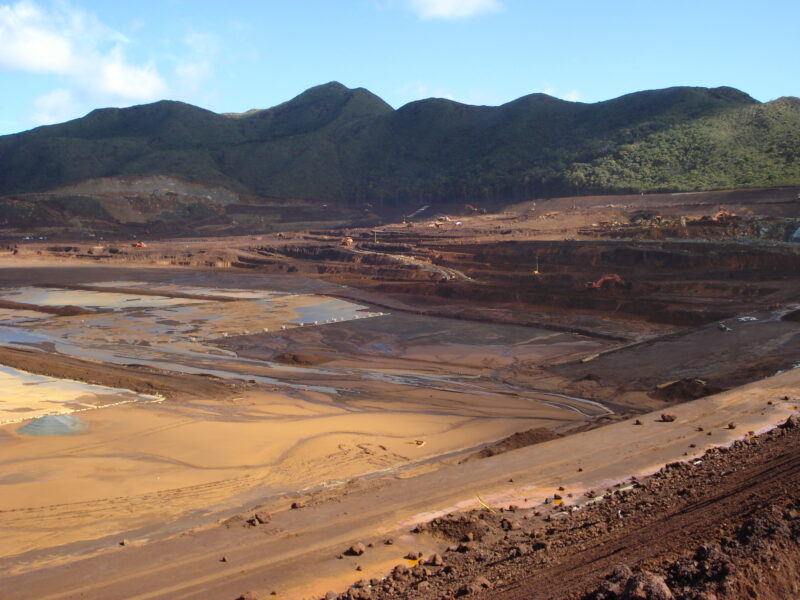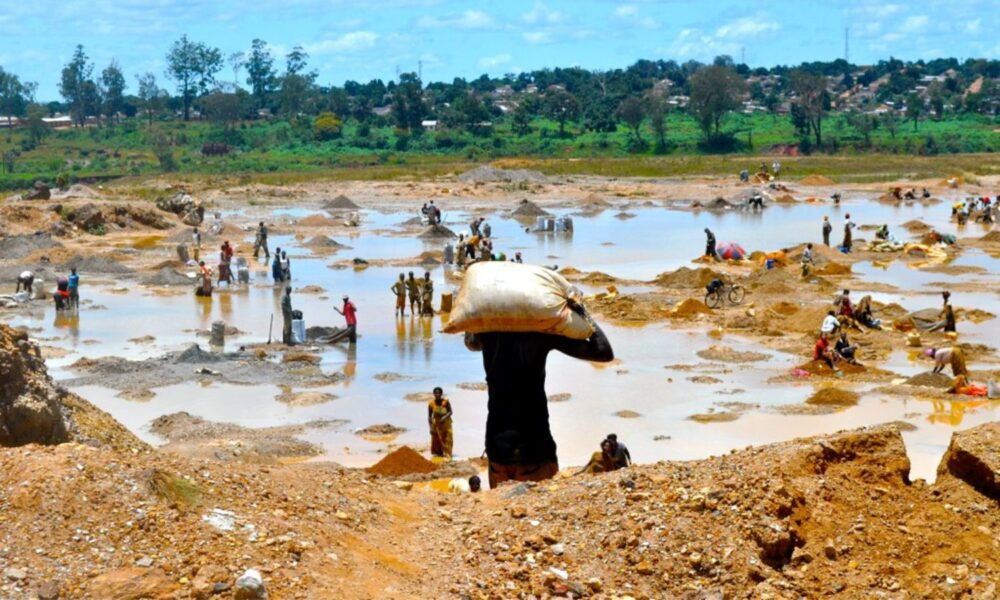Batteries are key to enabling the renewable energy transition. When the sun isn’t shining or the wind isn’t blowing, batteries help store clean energy to continue supplying electricity to the grid and to customers consistently and reliably. Generating and storing clean energy is a lifeline for the planet’s future; burning coal, oil, and gas fossil fuels causes 75% of greenhouse gas emissions. Fossil fuel extraction not only ignites climate change, but degrades land and wildlife ecosystems, pollutes waterways, acidifies the oceans, exacerbates natural disasters, expropriates Indigenous land, and leads to devastating chronic health impacts for fossil fuel industry workers and adjacent communities.
A fossil fuel energy grid extracts and expends finite resources. It is wasteful by design. By contrast, nearly every part of a renewable energy grid can be circular. Energy from the sun and wind never runs out and is used again and again. Rechargeable large-scale batteries can be charged with solar or wind power and cycled thousands of times in their lifetime. At end-of-life, the valuable metals in batteries can be recovered and reused.
A circular battery life cycle is possible. More batteries are being recycled through good policy, innovation, and corporate commitment. Public action and awareness-raising is bringing increased attention to the urgency of responsible sourcing.
This post takes a closer look at the supply chain of energy storage batteries from material mining to manufacturing. I explore solutions for more just, transparent, sustainable sourcing including ensuring materials are obtained with the Free, Prior, and Informed Consent of adjacent communities. I also explore alternatives like expanding production of and inventing new battery technologies with fewer critical minerals and reducing car usage by increasing public transit and walking through equitable urban planning. Our next post will then explore pathways to achieving a circular battery economy through battery repurposing and recycling.
While here I will focus on energy storage batteries for the power grid, electric vehicles—a much larger slice of the battery market—have very similar supply chains, manufacturing processes, and recycling infrastructure. Explore some of UCS’s resources on electric vehicle (EV) battery recycling here, here, here, here and here.
Mining and manufacturing present challenges
There are seven main raw materials needed to make lithium-ion batteries. Among these, the US defines graphite, lithium, nickel, manganese, and cobalt as critical minerals: metals of essential importance to US energy needs, but which have supply chains vulnerable to disruption. For lithium, cobalt, and nickel in particular, the battery industry drives global demand. Check out my previous post to understand how batteries use each of these materials.

Lithium
At the center of attention in the battery world, lithium is a mighty metal spurring the global battery revolution. It is ideal for batteries in many ways because it is very light (made of merely 3 protons, 3 neutrons, and 4 electrons) and highly reactive, capable of storing lots of energy between its bonds. It is also rechargeable, and does not degrade significantly over hundreds of recharges.
According to the US Geological Survey (USGS), global lithium consumption increased 33% from 2020 to 2021, due largely to battery demand (for both EVs and the power sector). More than half (55%) of lithium comes from Australia, 26% from Chile, 14% from China, and 6% from Argentina.
Lithium extraction presents challenges. In places such as Argentina, Chile, Bolivia, Serbia, and the US, Indigenous and allied environmental justice advocates charge that lithium mining operations have accelerated drought, thus decreasing agricultural yields, local food security, and rural livelihoods. They also say mining has contaminated waterways and soil, led to police violence against mine protestors, and threatened sacred Indigenous sites.
A prospective new site in Southern California’s Salton Sea could produce an estimated 20,000 metric tons of lithium carbonate per year (for reference, global production in 2021 was 100,000 metric tons). While the site has the potential to use much less water and produce less waste than traditional lithium operations, technical challenges loom, and local residents of the 82% Latine Imperial Valley community are concerned that mining may exacerbate local environmental and public health risks, without resolving pre-existing challenges of drought, toxic pollution, unemployment, and poverty.
In the scenario where humankind moves to 100% renewable energy by 2050, total demand for lithium for batteries from now until 2050 could approach or significantly exceed all known world reserves. (“Reserves” refers to how much mineral can currently be mined economically, not the estimated total amount of discovered and undiscovered minable lithium in the world, known as the total global resources.)
Lithium’s supply and demand challenge offers an opportunity for recycling and reuse innovation to help sustain lithium availability responsibly into the clean energy future.
Cobalt
The name cobalt comes from “kobold,” the German word for goblin. This is an appropriate moniker for a metal of almost mythical importance to battery cathode production and that sometimes carries urgent environmental and social implications.
Global cobalt consumption increased 20% from 2020 to 2021 due to demand for EV batteries, which can contain up to 20 kilograms of cobalt per 100 kilowatt-hour (kWh) pack, the size of a Tesla Model S battery.

A third of global cobalt is used for EV batteries, and more than two-thirds of the world’s cobalt comes from the Democratic Republic of Congo. A 2021 study by Bamana et al. reported that 15-20% of Congolese cobalt is sourced from 110,000 to 150,000 artisanal, small-scale miners. The study documents how waste from the small mines and industrial cobalt mines can degrade the local environment and impact food security. Artisanal, small-scale miners have also been linked to human rights violations including child labor, residential displacement, and lack of humane work conditions and wages for miners.
In a scenario where the world achieves 100% renewable energy by 2050—and if lithium-ion batteries continue to rely on cobalt—cumulative demand (between now and 2050) for cobalt for batteries could vastly exceed all known world reserves.
But there is good news: most of the cobalt in a used battery can be successfully recovered and used to manufacture new batteries. In addition, battery manufacturers are working to reduce or remove cobalt from the next generation of lithium-ion batteries. Some EV companies, for example, are transitioning from “NMC111” batteries (containing nickel, manganese, and cobalt in a 1:1:1 ratio) to “NMC811” with a fourth or fifth as much cobalt. They’re also adopting cobalt-free batteries such as LFP (containing a Lithium-Iron-Phosphate cathode). For example, half of all Tesla vehicles produced in the first three months of 2022 had LFP batteries. LFP batteries may overtake NMC in energy storage applications by 2030 because they are more affordable, can have longer lifespans, and are less dependent on critical metals.
Nickel
The shift towards lower-cobalt batteries means more nickel is needed. Like cobalt, nickel (of “Class 1” 99.8% pure status) is a component of the metal-mix used in the cathode of batteries.

Nickel sourcing is more geographically diverse than cobalt; 37% of nickel comes from Indonesia, 14% the Philippines, and 9% from Russia. Nickel mines can cause deforestation and water and soil contamination, such as in Claver, Philippines. Mine pollution in Indonesia has severely impacted indigenous fishing grounds, and state policies repress activist protests. Indigenous Russian communities are protesting Nornickel for tailing leaks into waterways that are killing fish and endangering public health.
Meanwhile, a new company called Prony Resources in New Caledonia—a French territory with large nickel deposits—is majority owned by tribal and local stakeholders and may offer a more equitable model for stakeholder governance and mine co-ownership.

The International Energy Agency (IEA) projects that nickel demand for EV batteries will increase 41 times by 2040 under a 100% renewable energy scenario, and 140 times for energy storage batteries. Annual nickel demand for renewable energy applications is predicted to grow from 8% of total nickel usage in 2020 to 61% in 2040. Like cobalt, opportunities to reduce nickel demand lie in new battery chemistries and recycling.
Copper
Twenty-seven percent of copper production occurs in Chile, 10% in Peru, 8% in China, and 8% in the Democratic Republic of Congo. And 70% of the copper used in batteries is already recycled. Researchers predict that the world will need to expand copper mining to meet the future supply deficit. However, of the top 300 undeveloped copper orebodies in the world, 47% are located on or in Indigenous lands, 65% are in high water risk areas, and 65% are in or near biodiversity conservation areas.

Similar to other critical minerals, the copper industry—such as in Chile and Peru—can be connected to environmental, labor, and public health problems that have incurred intense community resistance.
To secure a just energy transition that contests, rather than deepens, oppression and extraction, mining projects must uphold environmental justice and human rights.
Graphite
Graphite makes up 95% of battery anodes. EV batteries can contain up to 280 pounds of graphite, over a quarter of their total weight. Demand for graphite in batteries is projected to grow by 30% each year until 2030, and may constitute 8 to 25% of global demand for graphite by 2040. China produces 82% of the world’s natural graphite (which is more commonly deployed than artificial or synthetic graphite). Intensive graphite mining in Heilongjiang and Shandong provinces in China releases soot particulates into the air that damage crops, coat homes in a layer of dark powder, and contribute to heart and lung disease.
As advocates push for just graphite mining regulation and transparency, companies are innovating new circular economy technologies capable of recovering battery-grade graphite from used batteries and other materials, and doing so without the use of corrosive chemicals.
Other battery materials
The lithium-ion battery industry also uses a very small portion of global manganese, iron, phosphorous, and aluminum supplies. While small in volume, ensuring these battery material supply chains are just and sustainable is also important. In particular, manganese mining, sometimes undertaken without community compensation nor consent, has been linked with toxic contamination and chronic illness in Ukraine, South Africa, and Guyana. Iron ore mining, which releases large amounts of emissions, has resulted in devastating mine waste leaks causing water contamination and hundreds of fatalities. Across all mining sectors, government and industry commitments to just mining policy and a transparent circular economy is critical.
Manufacturing
After the raw materials are extracted, they must be refined and processed for use in batteries. China processes 72% of the world’s cobalt, 61% of lithium, and 95% of manganese, while Russia leads in nickel processing.
China also leads in lithium-ion battery cell manufacturing. The country has invested over $60 billion in this industry, and produced 80% of the world’s cells. While the US currently produces 13% of global cells (about 520 gigawatt hours per year, mostly in Tesla-Panasonic plants in Nevada), production is projected to increase due to significant investments within the Bipartisan Infrastructure Law and the Inflation Reduction Act.
Can battery manufacturing be more responsible and sustainable?
Yes, and the industry can and must get there.
Lithium-ion batteries—many for grid energy storage, and many more for electric vehicles—play an important role in the clean energy future. They not only store renewable energy for the grid, but also power electric vehicles, which have significantly lower environmental impacts than gasoline cars. The average electric vehicle in the US emits 52% fewer greenhouse gas emissions over its lifetime than the average gasoline vehicle (which burns about 4,500 gallons of gasoline over its lifetime). The average EV’s emissions are equal to a gasoline vehicle getting 91 miles per gallon.
To ensure the transition to a more battery-powered future is equitable and effective, energy storage and vehicle battery supply chains must be just and sustainable.
Here are four strategies government and business decisionmakers can use to improve lithium-ion battery materials sourcing and manufacturing:
- Require ethical, sustainable sourcing and strong supply chain standards. Companies and organizations can join the Global Battery Alliance and the Initiative for Responsible Mining Assurance. Industry leaders can actively respond to journalists and researchers from groups like the Business & Human Rights Resource Centre, and ensure upstream critical minerals suppliers obtain the Free, Prior, and Informed Consent of the communities near which they operate. The US could consider implementing binding rules on more just and sustainable mining, including considering reforms to the outdated 1872 Mining Law, which still governs hardrock mining 150 years later. The US could also consider rejoining the Extractive Industries Transparency Initiative (EITI), a coalition of over 50 countries dedicated to increasing just and environmentally friendly sourcing.
- Produce batteries with reduced reliance on high impact critical minerals. Policymakers and companies can accelerate the transition to batteries that use materials with lower environmental and social impacts. LFP batteries, for example, result in lower impacts because they contain no cobalt nor nickel.
- Support development of new battery technologies for energy storage. New solid-state, sodium-ion, and redox-flow batteries, along with other innovations, may offer more affordable, secure, long-duration, and critical-metal-free options for energy storage.
- Invest in infrastructure and urban planning solutions that increase public transit usage, walking, and biking. While accelerating the transition from internal combustion engine vehicles to electric vehicles is an urgent priority, the most effective strategy for reducing US car emissions—and the impacts of battery critical metal mining—is reducing car ownership and usage overall. Governments must undertake the difficult and essential work of building accessible, affordable, efficient public transportation systems, and built environments that encourage biking and walking.
Fleets of batteries—acres and acres of unassuming stationary metal boxes—are a key to unlocking the renewable energy future. But are batteries, themselves, renewable? Can they be reused or recycled at the end of their life? Where do their raw materials come from, and how can we ensure their valuable contents are recovered rather than wasted? Click to learn more!
How are Lithium-ion Batteries that Store Solar and Wind Power Made?
Want Clean Energy? Then You Also Want Battery Recycling.
And what about the solar panels and wind turbines, which generate the electricity that batteries store? Check out our previous posts on solar panel and wind turbine life cycles!
Editors note (1/4/23): Following feedback from colleagues in the mining justice sector, we’ve made edits to better reflect equitable, effective strategies for mining reform and advocacy.

